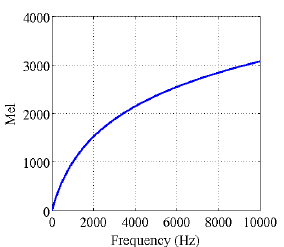MCPP uses a weird graph of human phychoacoustics measurements called MEL scale to process digital audio.
Why is MEL used in DSP voice recognition if it's based on logarithmic human perception, and why is it effective?
MEL theory gives the ratio that average humans logarithmically hear equal distance pitches, and the cause for that perception ratio is unknown.
Is it because humans speak frequencies using the same frequency ratios by which they hear them, so that PC's need to know those ratios?
Is there a physical reason for the MEL to work well in DSP? i.e. is it an unwitting compromise between equal loudness contour relative to physical sound energy and the loudest most useful frequencies in voice recognition?

